The AI Tsunami Is Here, Are You Ready?
If you think artificial intelligence (AI) is just a buzzword, think again. AI isn’t merely knocking at the door of Africa’s tech ecosystem, it’s already inside, coffee in hand, feet on the table, and sketching plans to rearrange the entire room. From startups in Kigali to tech hubs in Accra, AI is making its presence felt in every corner of the continent’s growing digital landscape.
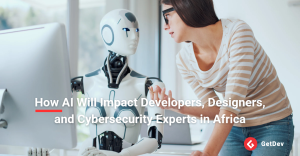
Whether you’re a software developer in Lagos, a product designer in Nairobi, or a cybersecurity expert in Cape Town, AI is not just another tool in your stack, it’s the new frontier. It’s reshaping how you work, how you collaborate, and how you deliver value. The rules of the game are changing, and AI is writing the playbook. But here’s the kicker: AI isn’t just a tool; it’s a co-worker, a mentor, a silent assistant, and occasionally, a very demanding boss who works 24/7 and never takes coffee breaks. It learns fast, moves faster, and expects you to keep up. It’s time to embrace this future, not in fear, but with strategy and curiosity or risk being left behind in the ever-quickening digital dust.
The Impact of AI on Software Developers
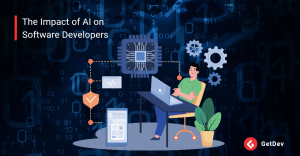
1. Code Like a Pro (Even If You’re Not)
Gone are the days when developers had to memorize every syntax rule, function signature, and library quirk just to stay afloat. In today’s AI-driven development world, forgetting a semicolon isn’t a disaster, it’s a footnote. With AI-powered tools like GitHub Copilot and Amazon CodeWhisperer, developers no longer need to write every line from scratch. These tools act like intelligent pair programmers, capable of generating code snippets, completing functions, and even offering context-aware suggestions that align with the logic of your project. What does that mean in practice? You can write cleaner code, faster, and with fewer bugs without pulling an all-nighter or smashing your keyboard in frustration. Whether you’re working in Python, JavaScript, or even less common languages, AI assistants help streamline your process and reduce the cognitive load.
And this isn’t just hype. A recent study found that developers using GitHub Copilot completed tasks 55.8% faster than those who didn’t, dramatically boosting productivity and reducing time-to-market. That’s not just an improvement, it’s a competitive edge. In a continent like Africa, where tech talent is surging and startups are scaling rapidly, the ability to code efficiently can make or break a product. AI is lowering the barrier to entry and allowing junior developers to perform like seasoned pros, while senior engineers can focus on higher-level architecture and problem-solving.
2. Predictive Analytics: The Crystal Ball of Coding
AI isn’t just helping developers write code, it’s helping them write smarter, more strategic code. Think of it as swapping out your rearview mirror for a forward-facing radar. With the power of predictive analytics, developers can anticipate problems before a single line of code becomes a headache in production.
Machine learning algorithms can sift through historical project data – past bugs, missed deadlines, team performance, deployment metrics and surface patterns that even the sharpest human eye might miss. These insights can then be used to predict everything from potential bottlenecks and security vulnerabilities to accurate resource allocation and delivery timelines. Imagine knowing in advance that a particular module you’re planning to build has historically taken 30% longer than expected or that a certain integration point tends to introduce regression bugs. Instead of reacting to problems, predictive analytics allows developers to course-correct in advance, drastically reducing downtime and late-night debugging sessions.
The result? Fewer bugs, faster deployment cycles, and a smoother development workflow overall. Clients get their features on time (or even early), product managers stop hovering nervously, and developers can finally push code with confidence. In Africa’s fast-growing tech space, where agility and efficiency are vital, predictive analytics gives teams the foresight to stay ahead. It transforms development from a reactive process into a strategic one, one where data doesn’t just tell you what happened, but what’s likely to happen next. And that’s a superpower worth having in your toolbox.
3. Automation: The Developer’s New Best Friend
Let’s face it, no one becomes a software developer because they dream of renaming 400 files or fixing the same deployment script for the hundredth time. Yet, these repetitive, time-consuming tasks have long been part of the job. Enter AI automation: the unsung hero that’s quietly revolutionizing the daily lives of developers across the globe, and right here in Africa.
AI-driven automation is streamlining everything from code formatting, testing, and integration to deployment and monitoring. Tasks that once took hours of manual effort can now be completed in minutes or even seconds. Continuous Integration/Continuous Deployment (CI/CD) pipelines embedded with AI capabilities can detect anomalies, suggest improvements, and even resolve issues autonomously.
And this isn’t just theory. In South Africa, a recent study revealed that 58% of engineering managers reported being able to ship high-impact work quicker and more consistently thanks to AI-driven development practices. When the routine is handled by AI, teams have more bandwidth for what really matters: solving complex problems, building innovative features, and thinking strategically about the product.
The implications for Tech in Africa are profound. Startups and enterprises alike are no longer held back by limited technical capacity or lengthy development cycles. Automation levels the playing field, making it possible for lean teams to deliver work at the speed and quality of larger, better-funded competitors.
In short, automation is not about taking jobs away from developers. It’s about taking away the parts of the job nobody misses, so developers can focus on what they do best, innovate, create, and build the future of Tech in Africa.
4. Upskilling: AI as a Learning Companion
AI isn’t just a tool for getting work done, it’s also becoming one of the best mentors a developer can have. In a profession where staying relevant requires constant learning, AI is stepping in as a powerful ally for personal and professional growth.
Modern platforms are embedding AI into the learning experience, offering intelligent tutorials, adaptive coding exercises, real-time feedback, and personalized learning paths. Instead of generic training videos and static documentation, developers can now learn through dynamic, AI-powered environments that adjust to their skill level and learning pace. Missed a concept? AI notices and reinforces it. Struggling with recursion? AI will show you simpler alternatives, walk you through logic, or suggest analogies until it clicks.
AI is also changing how developers improve their code. Tools that offer AI-driven code reviews don’t just check for syntax, they assess code quality, suggest optimizations, and even flag potential security flaws. It’s like having a senior engineer sitting beside you, only this one never gets tired and doesn’t mind if you ask the same question ten times.
Across Africa, where access to top-tier mentorship can be limited by geography or resources, this kind of AI-enabled upskilling is a game changer. Programs like Andela’s Learning Community which has already trained over 110,000 technologists across the continent are leveraging AI to democratize access to high-quality technical education. No longer is world-class training confined to Silicon Valley; it’s now within reach for a self-taught developer in Accra or a university student in Addis Ababa. This shift is not just helping individuals level up, it’s expanding the entire talent pool for Tech in Africa. As AI continues to evolve, so will its ability to teach, guide, and inspire the next generation of African developers to compete on a global stage.
The Impact of AI on Product Designers
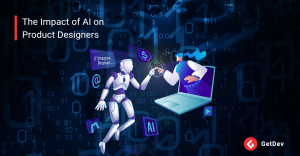
While developers often get the spotlight when it comes to AI integration, product designers are quietly experiencing their own revolution. AI is not just assisting with pixels and palettes, it’s redefining how interfaces are imagined, built, and tested. For African designers, this presents a unique opportunity: to design smarter, faster, and more human-centered products without being limited by time or tools.
1. Design at the Speed of Thought
Design, at its core, is about solving problems creatively, but the creative process can often be slowed down by tedious, repetitive tasks. That’s where AI tools like Figma’s AI features and Adobe Sensei come in. These platforms can now generate layout suggestions, auto-adjust visual elements for balance and hierarchy, and even simulate how users might interact with a design before a single line of code is written.
Want to align elements perfectly? AI can handle that in seconds. Need to generate multiple layout options for A/B testing? Done. Designers are now able to iterate at lightning speed, moving from idea to execution in record time. Instead of spending hours nudging boxes into perfect alignment, they can channel their energy into strategy, creativity, and storytelling where human insight truly shines.
For product designers across Africa, many of whom juggle multiple roles in lean teams, this acceleration is a game changer. It means better designs, delivered faster, with fewer rounds of revision. And that’s not just efficiency, it’s empowerment.
2. Personalization: Designing for the Individual
Gone are the days when one-size-fits-all designs could pass as “user-centered.” Today’s users expect experiences tailored to their needs, behaviours, and contexts, and AI is making this possible at scale. By analyzing user data, interaction patterns, and contextual signals, AI can help designers craft experiences that feel personal and intuitive.
For example, AI can identify that a user tends to browse a fintech app at night with low screen brightness and offer a dark mode by default. Or it might notice that rural users prefer simpler navigation due to slower internet speeds and suggest lighter, streamlined versions of the interface. This kind of intelligent adaptation was once the stuff of dreams, but it’s now within reach.
In Africa, where user diversity is vast in terms of language, culture, tech literacy, and connectivity, the ability to personalize experiences is critical. AI helps designers bridge these gaps, making digital products more inclusive and accessible across different regions and demographics.
3. Collaboration: AI as a Design Partner
Despite what sci-fi movies might suggest, AI isn’t coming for designers’ jobs. Instead, it’s showing up as a valuable partner, one that enhances collaboration across teams. AI can generate style guides, ensure consistency across components, and even suggest front-end code snippets that align with the design, making handoffs between designers and developers smoother than ever.
This shift promotes a more integrated workflow. Designers in Nairobi can create components in Figma, and developers in Johannesburg can receive AI-optimized code suggestions that mirror those designs without the usual back-and-forth clarifications. That’s not just helpful; it’s revolutionary for teams working remotely or across borders, which is increasingly the norm in Africa’s distributed tech landscape. By breaking down silos and minimizing miscommunication, AI fosters a collaborative environment where everyone – designers, developers, and product managers can work in harmony toward a shared vision.
4. Prototyping: From Concept to Reality
One of the most time-consuming stages of design is prototyping. It’s where ideas are tested, refined, and tested again, often under tight deadlines. But AI is turning prototyping into a sprint rather than a marathon.
AI tools can now generate interactive prototypes based on basic wireframes or even written prompts. Want to see how a user might navigate your new app? AI can simulate click paths and highlight friction points. Want to test four layout ideas in parallel? AI can build and preview them instantly. What used to take days can now be done in hours, freeing designers to explore more bold ideas without the fear of wasting time.
This acceleration is especially important in Africa’s fast-moving tech industry, where speed to market is critical and resources are often limited. AI-driven prototyping empowers designers to validate ideas quickly, iterate with confidence, and deliver refined products that truly solve user problems.
The Impact of AI on Cybersecurity Experts
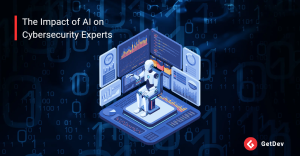
In an age where cyber threats evolve faster than most software can update, cybersecurity experts are under constant pressure to stay one step ahead of attackers. AI isn’t just a helpful assistant in this battle, it’s rapidly becoming an indispensable partner. From real-time threat detection to predictive analysis and intelligent automation, the impact of AI in cybersecurity is deep and far-reaching. For professionals safeguarding Africa’s digital infrastructure, this shift couldn’t come at a better time.
1. Threat Detection: AI as the Watchful Guardian
One of the most critical tasks in cybersecurity is identifying threats before they wreak havoc. Traditional systems often rely on rule-based detection, which can miss new or sophisticated attacks. AI, however, brings something new to the table: intelligent, adaptive monitoring. AI-powered security systems can ingest and analyze massive volumes of data, from user activity logs and network traffic to endpoint behavior and email communications. These systems use machine learning algorithms to recognize patterns, flag anomalies, and detect suspicious behavior in real-time.
Picture this: a phishing attempt is launched at an organization’s email system. A traditional filter might flag it if the wording looks suspicious. But an AI-driven solution goes deeper, it evaluates sender reputation, compares the message with past attack templates, and cross-references it with global threat databases. All in milliseconds. For African institutions, especially those in banking, healthcare, and government, this kind of proactive monitoring is critical. As cybercriminals increasingly target developing economies, AI serves as a tireless watchdog, ensuring threats are identified before they escalate into full-blown crises.
2. Automation: Responding Faster to Threats
In cybersecurity, speed is everything. The longer a threat goes unaddressed, the more damage it can do. AI plays a transformative role by automating time-sensitive tasks that once required human intervention. Routine operations like scanning for vulnerabilities, monitoring system logs, enforcing firewall rules, and even initiating first-response actions can now be automated using AI. For example, when unusual login behavior is detected, an AI system can automatically lock down the account, trigger an alert, and begin a forensic audit, all before a human even checks their inbox.
This not only reduces response time but also alleviates the mental fatigue and pressure on cybersecurity teams. It allows human experts to focus on higher-order strategic thinking like designing better defenses or responding to zero-day threats, rather than combing through endless log files. In a growing tech scene like Africa’s, where cybersecurity teams are often small and resources are stretched, AI-driven automation can be the difference between surviving a breach and stopping it in its tracks.
3. Predictive Security: Anticipating Attacks
Wouldn’t it be great to stop an attack before it even begins? That’s exactly what predictive security powered by AI, aims to do. By analyzing historical data, user behavior, known attack vectors, and threat intelligence feeds, AI can anticipate vulnerabilities and flag weak points in your systems before they’re exploited. Think of it as cybersecurity with foresight. AI algorithms might notice, for example, that an organization’s employees frequently fall for phishing simulations, or that an outdated plugin on a popular app presents a risk. Instead of reacting to the consequences of an attack, teams can now prioritize patches, adjust security policies, or launch awareness campaigns to reduce risk proactively.
In Africa, where digital transformation is accelerating across sectors like fintech, education, and e-health, the ability to predict and prevent cyber incidents is invaluable. It protects not only sensitive data but also builds trust in digital services, a key factor in driving broader tech adoption.
4. Collaboration: AI as a Security Partner
AI isn’t just working in the background, it’s becoming a collaborative force in cybersecurity teams. Intelligent platforms now offer centralized dashboards with actionable insights, real-time recommendations, and shared threat intelligence. This turns isolated data into collective knowledge that can be used by teams to strengthen defenses together. For instance, when an AI system flags a threat in one region- say, a new ransomware variant in North Africa, it can immediately share that information across other security nodes, alerting teams in West or Southern Africa to prepare accordingly. This kind of shared intelligence builds resilience across the continent’s interconnected tech landscape.
Moreover, AI tools help reduce the gap between junior and senior cybersecurity professionals. They offer contextual guidance, suggest best practices, and provide visual analysis, making it easier for teams to collaborate, regardless of experience levels. With cybersecurity talent in Africa still growing to meet rising demand, AI enhances team effectiveness without demanding deep specialization from every member.
AI’s Role in Africa’s Tech Ecosystem
Africa’s tech ecosystem is not just evolving, it’s accelerating. Across the continent, developers, designers, and cybersecurity experts are part of a historic shift as artificial intelligence becomes woven into the digital fabric of daily life. But AI’s impact in Africa goes far beyond individual professions, it is reshaping the foundation of the continent’s digital future. From bridging inequalities to supercharging economic output, the role of AI in Tech in Africa is becoming not just beneficial, but indispensable.
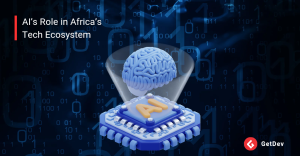
1. Bridging the Digital Divide
For decades, the digital divide has been one of Africa’s most persistent challenges. Connectivity gaps, limited infrastructure, and unequal access to technical education have left entire communities underserved in the digital economy. But AI has the potential to change that narrative dramatically. AI-powered solutions are making it easier and more cost-effective to bring services like education, healthcare, and finance to remote or underserved areas. For example, language models trained on African languages are breaking down communication barriers. AI chatbots are providing basic medical advice in rural clinics. And machine learning is being used to tailor e-learning platforms to individual learners’ needs, even in bandwidth-constrained environments.
Corporate investment is playing a major role too. Microsoft’s recent commitment to invest an additional 54 billion rand (over $2.8 billion) in AI infrastructure in South Africa is just one example of how tech giants are betting big on Africa’s AI future. These investments are not just about building data centers, they’re about expanding access to skills training, cloud computing, and developer tools across the continent. In short, AI is becoming a powerful equalizer, helping close the gap between urban and rural, wealthy and underserved, connected and disconnected.
2. Fostering Innovation
Africa’s greatest strength may lie in its challenges. Whether it’s limited arable land, fragmented healthcare systems, or low levels of financial inclusion, the continent has a unique set of problems and AI is uniquely suited to solve them. In agriculture, AI-driven platforms are being used to optimize crop yields, detect plant diseases through image recognition, and provide hyper-local weather forecasts to smallholder farmers. In healthcare, AI is enabling mobile diagnostics, improving maternal care, and enhancing disease tracking. In fintech, machine learning models are helping predict creditworthiness in the absence of formal financial history, bringing banking services to millions who were previously excluded.
African startups are not just applying AI, they’re reimagining it. By focusing on grassroots innovation and local context, they’re creating solutions that Silicon Valley never could. And as these startups scale, they’re proving that Africa is not just a consumer of global technology, it’s a contributor. Governments, too, are waking up to the potential. Policy frameworks, AI strategy documents, and public-private partnerships are emerging across the continent, from Rwanda to Kenya to Nigeria, laying the groundwork for innovation at scale. The result? A continent that’s no longer waiting for solutions to be imported, but actively building its own with AI at the center.
3. Economic Growth
AI’s role in economic development is not speculative, it’s transformative. According to estimates, the adoption of AI could add as much as $2.9 trillion to Africa’s economy by 2030. That’s not just a number, it’s a seismic shift in productivity, job creation, and industry reinvention. At the macro level, AI is driving efficiencies across entire sectors. Manufacturing operations are being optimized through predictive maintenance. Supply chains are becoming smarter and more resilient. Customer service is being transformed with AI-powered chatbots and virtual assistants.
At the micro level, entrepreneurs and SMEs who form the backbone of Africa’s economy are using AI tools to build better products, serve customers more effectively, and make data-driven decisions without hiring expensive consultants. And there’s a knock-on effect too. As AI takes root, it stimulates demand for adjacent industries: data labeling, cloud infrastructure, cybersecurity, UX design, and of course, AI ethics and governance. In other words, AI is not replacing human work, it’s creating new categories of it.
But realizing this growth isn’t automatic. It requires sustained investment in education, supportive policies, inclusive infrastructure, and a deliberate push to ensure that the benefits of AI are distributed fairly across regions and social classes. Still, the momentum is undeniable. AI is no longer a “future technology” for Africa, it’s a present force, actively shaping what tomorrow will look like.
Challenges and Considerations
While the impact of AI on Africa’s tech ecosystem is overwhelmingly promising, it’s not without its challenges. Every transformative wave comes with its own set of speed bumps and AI is no exception. For developers, product designers, and cybersecurity experts across the continent, understanding these challenges is not about fearing the future, but preparing for it thoughtfully.
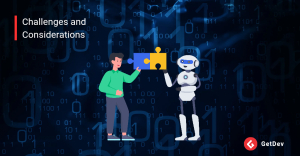
If AI is the engine driving innovation, then ethical standards, skills development, and infrastructure are the fuel and right now, Africa must ensure it’s not running on empty.
1. Data Privacy and Ethics
At the heart of AI is data and lots of it. AI systems rely on massive datasets to learn, adapt, and make decisions. But this raises a critical question: Who owns the data, and how is it being used?
In Africa, where digital regulation is still catching up with innovation, the risk of data misuse is very real. AI-powered platforms may collect sensitive personal information, ranging from financial transactions and health records to behavioral data, often without users’ full understanding or consent.
Beyond privacy, there are broader ethical questions to confront. How do we prevent AI systems from reinforcing societal biases like racial profiling, gender discrimination, or language exclusion? How do we ensure that African data is not just harvested by foreign companies but used to benefit African users?
Establishing strong ethical frameworks and data protection laws is no longer optional, it’s urgent. Initiatives like the African Union’s Digital Transformation Strategy and Nigeria’s Data Protection Regulation are steps in the right direction, but much work remains. For Tech in Africa to grow sustainably, trust must be baked into every AI application. That means transparent algorithms, clear consent protocols, and AI systems that are aligned with human values, not just machine efficiency.
2. Skill Development
The impact of AI on jobs is a global concern but in Africa, it presents both a challenge and a golden opportunity. On one hand, there’s a real risk of a growing skills gap. AI and related technologies are evolving rapidly, and many professionals simply don’t have the training to keep up. On the other hand, AI offers new, high-demand career paths: machine learning engineering, AI ethics, data science, AI product design, and more. The key is access and right now, that access is uneven.
Many African universities still offer outdated curricula that don’t reflect the realities of today’s tech landscape. Online platforms exist, but they often require stable internet access and prior foundational knowledge. Without targeted investment in AI education and reskilling initiatives, a large segment of the population risks being left behind.
The good news? Change is possible and already happening. Programs like AI Saturdays, Data Science Nigeria, and Google’s AI Research Center in Ghana are equipping young Africans with cutting-edge knowledge. But we need more: partnerships between tech companies and educational institutions, localized training programs, and affordable access to AI learning resources in multiple African languages. Ultimately, AI won’t replace human talent but it will heavily favor those who know how to work with it. Skill development is the bridge between Africa’s young workforce and its AI-powered future.
3. Infrastructure
Let’s address the elephant in the server room: you can’t run powerful AI models on dial-up internet and secondhand hardware. For AI to truly thrive in Africa, digital infrastructure must be treated as a national priority. This means high-speed, reliable internet in urban and rural areas. It means affordable smartphones and computers that can run AI-driven apps. It means building and maintaining local data centers that reduce latency and protect data sovereignty. And it means widespread access to cloud services that make computing power available to everyone, from bootstrapped startups to government agencies. Without this backbone, even the most promising AI ideas remain just that ideas.
Encouragingly, progress is underway. From Rwanda’s push to become a regional tech hub, to Kenya’s Smart Africa initiative, to Egypt’s investment in digital innovation zones, governments are starting to see infrastructure as the foundation for digital success. Still, public-private collaboration is essential. Global players like Microsoft, Google, and Amazon are investing in African infrastructure, but local innovation and regulation must steer the ship. We need solutions built for Africa, by Africa infrastructure that supports not just data consumption, but also AI creation.
Conclusion: Embrace AI or Be Left Behind
AI is no longer a passing trend or a futuristic concept; it is the heartbeat of the next era of work, innovation, and security. Whether you’re a developer in Lagos, a designer in Nairobi, or a cybersecurity expert in Cape Town, the truth is undeniable: AI is already here and it’s shaping the very landscape of Africa’s tech ecosystem. For professionals across Africa, the choice is clear. Embracing AI is no longer optional, it’s a necessity. As AI continues to advance, it offers unprecedented opportunities to increase productivity, foster creativity, and enhance the security frameworks that protect our digital lives. The tools, platforms, and insights AI provides aren’t just nice to have; they are the enablers of Africa’s digital transformation.
For developers, AI offers the power to write smarter, faster, and more efficient code, enabling them to focus on innovation rather than repetitive tasks. For product designers, AI unlocks faster prototyping, more personalized user experiences, and enhanced collaboration. And for cybersecurity experts, AI acts as both a sentinel and a strategic partner, protecting systems, predicting threats, and automating complex security operations.
However, this future is not something that will pass you by while you sit back. The question now is simple: Are you ready to welcome AI into your work, your industry, and your future? Because whether you’re prepared or not, AI is not waiting for anyone. It is already transforming industries, driving new ventures, and reshaping the digital economies across the globe, including Africa.
The continent’s tech ecosystem stands at a crucial juncture. As African professionals, developers, designers, and cybersecurity experts, the ball is in our court. We can either embrace AI’s transformative power or risk being left behind as the digital world moves forward. Africa has long been a continent of resilience, resourcefulness, and innovation. The impact of AI can propel Africa to new heights of technological advancement, economic growth, and global influence. But to seize this opportunity, it’s time for us to adapt, evolve, and take charge of our digital futures.
So, the real question is this: Will you be an architect of Africa’s AI-driven future, or will you watch as the world builds it without you? The time to act is now, embrace AI or be left behind.